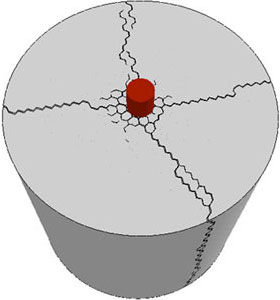Blast Walls and Barricades
Capabilities
The ability of buildings, bridges, dams, and other critical infrastructure to withstand catastrophic events such as earthquakes, strikes, or blasts is of growing concern. ES3 provides predictive computations simulations of the response of reinforced concrete and steel structures to potential these catastrophic events. Our simulations assist in determining asset vulnerability, placement of blast walls and barricades, or modification of operation to ensure the structures are kept safe. Continuum-based models, which homogenize material behavior, are inherently incapable predicting post failure mode behavior. Most materials are not homogeneous when considered at the sufficiently small dimensional scale (micro- and meso-scale). Modeling of this heterogeneous character enables ES3 to predict strain localization, crack initiation, and crack propagation, which, in turn strongly influences the ultimate failure modes of a structural system.


ES3 numberical simulation (left) predicts actual test failure results (right) of concrete pull out test


ES3 numberical simulation (left) predicts actual failure results (right) of blast resistant door subject to close-in charge.
